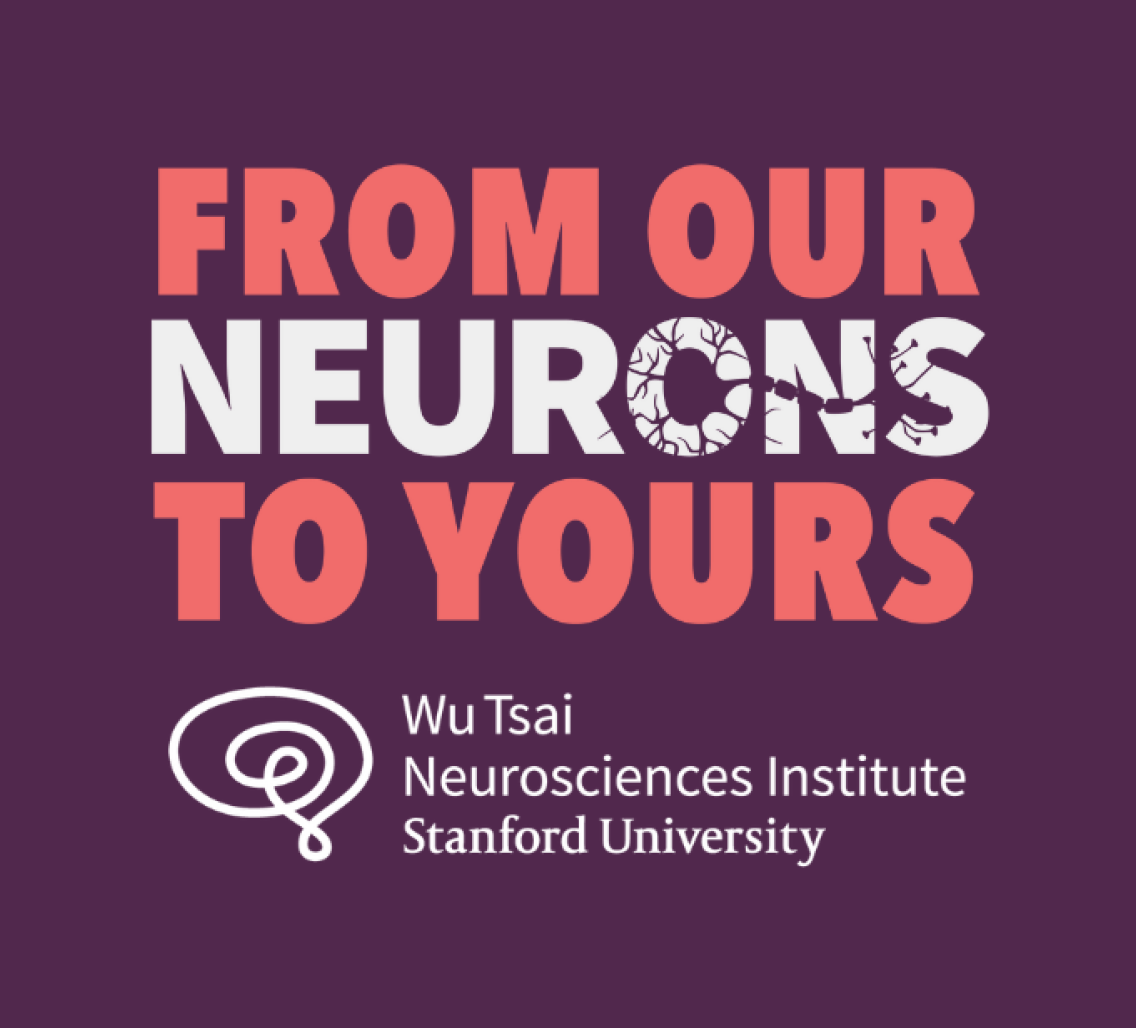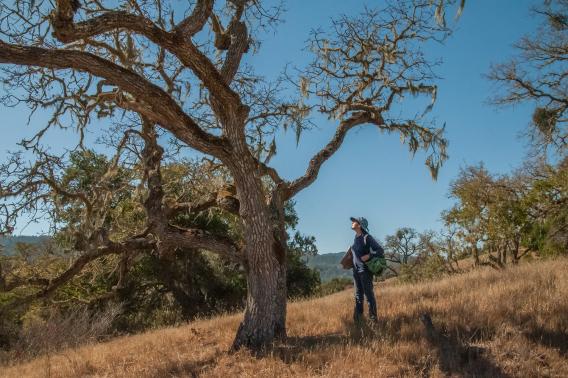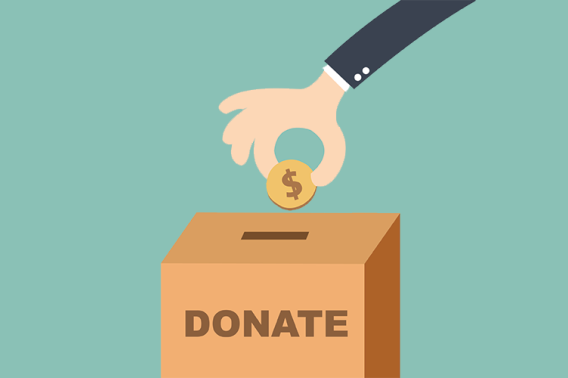Why our brains are bad at climate change

If you follow the science or the news, you know how big of a risk climate change is. Storms, coastal flooding, heat waves, extinctions, mass migration — the list goes on.
But — as you can probably also appreciate — it’s really hard to properly perceive that risk. It’s much easier to focus on today’s emergency, this week’s looming deadline, this quarter’s economic forecast — where the risks are objectively much smaller, but feel more pressing.
This is where neuroscience comes in: Why are our brains so bad at perceiving this existential, long-term risk to our society and our planet? And are there ways we could work with our brains' limitations to improve our decision-making around environmental issues and the future more broadly?
To answer this question, we spoke with Nik Sawe, a neuro-economist who uses brain imaging to study environmental decision making in the lab of Brian Knutson in the Stanford Department of Psychology. Nik is also a policy analyst at the think tank Energy Innovation, where he is working on policy avenues to reduce carbon emissions in the industrial sector.
Listen to the episode to learn more!
SUBSCRIBE on Apple Podcasts, Spotify, Amazon Music and more.
References
- Parks donation FMRI study
- Ecolabeling/energy-efficient purchasing FMRI study
- "Price of your soul" study by Greg Berns
- Dan Kahan science literacy/numeracy and climate change risk study
- Brain stimulation for perspective-taking of future generations
Episode Credits
This episode was produced by Michael Osborne at 14th Street Studios, with production assistance by Morgan Honaker. Our logo is by Aimee Garza. The show is hosted by Nicholas Weiler at Stanford's Wu Tsai Neurosciences Institute.
If you're enjoying our show, please take a moment to give us a review on your podcast app of choice and share this episode with your friends. That's how we grow as a show and bring the stories of the frontiers of neuroscience to a wider audience.
Episode Transcript
Nicholas Weiler:
Today I want to talk about the neuroscience of climate change.
If you follow the science or the news, you know how big of a risk climate change is. Storms, coastal flooding, heat waves, extinctions, mass migration, the list goes on. But as you can probably also appreciate, it's really hard to properly perceive that risk. It's much easier to focus on today's emergency, this week's looming deadline, this quarter's economic forecast where the risks are objectively much smaller, but feel more pressing.
This is where neuroscience comes in. Why are our brains so bad at perceiving this existential long-term risk to our society and our planet? And are there ways we could work with our brain's limitations to help finally get us on the right track?
To answer this question, we spoke with Nik Sawe who works at the intersection of climate science and neuroscience.
This is From Our Neurons to Yours from the Wu Tsai Neurosciences Institute at Stanford University, bringing you to the frontiers of brain science.
Let's get right to the conversation.
Nik Sawe:
I'm Nik Sawe. I'm a neuroeconomist who studies environmental decision-making through neuroimaging at Stanford and also a policy analyst at the think tank Energy Innovation where I'm working on policy avenues to reduce carbon emissions in the industrial sector.
Nicholas Weiler:
So Nik, you've spent several years here at Stanford in Brian Knutson's lab using brain imaging to study decision-making around environmental issues. That's kind of an unusual topic, neuroscience and environment, and I'm really excited to get into that today and hear what we're learning about how our brains influence the way we think about these complicated decisions. But before we do, I'd love to just hear what interested you in this topic. How did you get into looking at the neuroscience of climate and the environment?
Nik Sawe:
I always wanted to work on nature and environmental issues. One night I was reading neuroeconomics papers for fun, which is super common and healthy, I'm sure. But the studies were all about how do we allocate scarce resources? How do we make trade-offs between short and long-term benefits or between moral and economic values? And that got me thinking that's all very relevant to the kinds of dilemmas that we run into when we're making decisions about our environment that impact climate change. This was back in 2009 and no one had really applied those methods to studying environmental issues. But luckily Stanford has a PhD program where they like taking risks to allow people to combine different fields creatively to take a look at environmental issues. So I was able to study neuroeconomics, applying it to environmental decisions with Brian Knutson in the psych department.
Nicholas Weiler:
You use the term neuroeconomics. What does neuroeconomics mean?
Nik Sawe:
Basically, you're doing behavioral economic studies, so trying to understand human behavior while you're brain imaging someone. Usually it's functional MRI, which you can think of as time-lapse photography of the brain's activity. So classical economics thinks of us all as rational actors with access to infinite processing power. Behavioral economics does not give us that much credit. It studies the ways that our cognition may be a little more fallible like in our decisions about the environment and climate change.
Nicholas Weiler:
Right. Well, our decisions in this space are clearly fraught. So let's get into talking a little bit about what we have learned about what neuroscience can tell us about why these decisions are so difficult. Climate change is famously what people call a wicked problem that is really difficult to come up with a scientific or engineering kind of solution for. It's social, it's political, there are lots of stakeholders. The end goal is not clearly defined. But before we dive into the neuroscience, I just want to be clear for listeners, we're not talking about the neuroscience of convincing people of the science of global warming or that climate change is a serious problem because, well, the science is very clear that it is a huge problem and many of the solutions are fairly clear as well. And a majority of people do think climate change is a serious issue, right?
Nik Sawe:
Yeah, absolutely. Pew research polls find that the majority of Americans, like about 54% view climate change as a major threat that is radically partisan. It's around 78% for Democrats, 23% for Republicans. It's getting more polarized than ever over the years. But even for people who admit it's a major threat, when Pew then rank orders where it falls in terms of national priorities, it's currently 17th of 21, usually hangs out right around there year to year. And so even if climate change is concerning to people in a vacuum, it starts falling to the bottom of the stack fairly quickly when you start worrying about, say, healthcare costs or the strengths of the economy, those kinds of things.
Nicholas Weiler:
So that is, I think, where I'd like to focus our conversation because so many people know that climate change is a really critical issue. People are aware, I think, of the consequences. And I think possibly in that same survey, two thirds of people said that they thought the government should be prioritizing clean energy over fossil fuels. So there's engagement on the importance of the issue, but maybe not it's priority over other things that feel more pressing or more immediate. And that's sort of what I want to talk about, which is if many of us understand the threat posed by climate change, why aren't we all out in the streets? Why do we care more about people on Nextdoor complaining about package thefts than the fact that ocean temperatures have been hotter than ever recorded every single day for the past year? What can neuroscience tell us about this?
Nik Sawe:
There's a pair of risk researchers, Gadig and Hendricks, and they've studied what makes us prioritize a given risk. And it turns out we care about what happens to us here, now and for certain.
Nicholas Weiler:
To us here, now and for certain.
Nik Sawe:
Exactly. And in the case of climate change, for many people, certainly for most Americans, it's failing on all those counts. It hasn't hit them personally or perhaps it has, but there's not a direct line of cause and effect that feels clear. It still feels remote. It's something that happens to people in places and times that are distant from our own. People just don't worry about the Maldives day to day. And this isn't true everywhere. The wildfires have made it more salient for a lot of us living in California in recent years. And The Economist just published a piece with the clever headline, Global Warming is Coming for Your Home, a little bit dramatic. Still for most people it's a distant and abstract threat. And so you have these dimensions where climate change is just failing to motivate a reaction. There are reasons at a neuroscience level for this caught up in how we devalue future events, how we respond to uncertainty and ambiguity, those sorts of things.
Nicholas Weiler:
So in your work, you've looked in detail into this. What are some of the reasons why we don't pay attention to something that we know is a major threat but maybe it's not affecting us right now or it's a little bit distant in the future?
Nik Sawe:
So there's a lot of work around what's called temporal discounting, essentially devaluing the future. We all do this to differing degrees, and to some extent that's evolutionarily rational and pragmatic. It's an uncertain world. You might get hit by a bus or run down by a lion tomorrow. It makes sense that that's kind of an adaptation that we've grown up with, but it leads to all sorts of maladaptive behaviors when you think about how we take care of our health or finances or the environment.
Nicholas Weiler:
So it's sort of similar to why people don't exercise enough or eat to maintain a healthy, long life.
Nik Sawe:
Exactly right. Yeah.
Nicholas Weiler:
Okay. So I'd love to hear more about how different parts of the brain are involved in this. So where is this happening in the brain? You've described this as sort of a tug-of-war between different parts of our brain. How do different parts of our brain contribute to these kinds of long-term decisions?
Nik Sawe:
So what we see in the brain if we're talking about devaluing the future, if somebody is more financially impulsive, so they're willing to take smaller, short-term gains over larger rewards that takes some time to pay out, that's being driven by the ventral striatum. This is a dopamine driven region. It's often referred to as the brain's reward pathway, so named because sex, drugs, rock and roll, all the good stuff in life, whenever those are studied, it's the striatum that's fired up. So that reward pathway is pushing you to act now and be a short-term impulsive thinker. And then as far as pumping the brakes, pushing you to take larger rewards that require some patience, that's related to activity in the prefrontal cortex, primarily in the dorsolateral regions towards the sides of your temples and also medially towards the center. And that medial prefrontal cortex helps us with value integration, figuring out what something is worth to you. So those regions of the prefrontal cortex are exerting more conscious thought, more top-down control, and inhibition.
Nicholas Weiler:
Okay. So there's sort of this tug of war between the two.
Nik Sawe:
Yes, exactly. And we actually see this play out in environmental decision making in one of the neuroimaging studies we did at the Knutson lab. We had people purchasing energy-efficient appliances that vary on price, so near-term cost, and then annual energy cost with that longer-term thinking. And some of these had a very recognizable eco-label that folks may have seen, the blue Energy Star logo. And what we found is for more financially impulsive individuals, their decisions are dictated by emotional regions. So you can predict what they're going to do based on activity in the nucleus accumbens, which is at the heart of the striatum, that brain's reward pathway that's pushing positive emotions and buying. And then on the other end of the spectrum, we see the anterior insula and that tracks physiological and even moral disgust and outrage.
So that's representing negative emotions and pushing these impulsive folks away from buying. But then when you look at somebody who is more patient in a temporal discounting task, their emotions are predicted by the medial prefrontal cortex. The encouraging thing that we see from an environmental standpoint is that eco-label also ramps up that reward pathway. It's generating a positive emotional signal. So in the wild, it's helping people who make those emotional decisions to make ones that are more energy efficient and beneficial for themselves in the planet in the longterm, so.
Nicholas Weiler:
That's interesting. So you've sort of got the people who are more reliant on their executive planning faculties and the people who are more reliant on their emotional responses to things, and you can kind of translate from one to the other by giving an emotional response to some longterm benefit.
Nik Sawe:
Yes, exactly. So we've got a mechanism for action for how eco-labels help foster environmental decision-making. Cynically, if you're an evil corporation that steeples their fingers coming up with ways to catch in on environmental consciousness, you could leverage this by greenwashing and with an environmental label that's not backed by a rigorous standard. But one of the interesting catches that we saw in that Energy Star study was while the medial prefrontal cortex was predicting the choices of the more financially patient folks as you would expect, it's also pushing them not to buy. So disengaging and keeping the money for yourself. And we've seen this before when we studied another environmental decision, which was having people donate to protect park lands that are under threat of development. So in that case, again, if you wanted to move people to do the pro-environmental thing, it turned out to be an emotional decision.
Here it was very powerfully the activity in the anterior insula. So again, that negative emotional response. In this case, outraged, you could see visibly more strongly on the neuroimaging the more destructive that the proposed land use was. That negative response was predicting the choice to donate. And then again, the medial prefrontal cortex, which is doing that cost benefit assessment of what something is worth to you, it was pushing not to donate, to keep the money for yourself. So like you were talking about earlier, we have this tug of war, push-pull of opposing regions, whether it's that dichotomy of patience versus impulsivity or emotion versus reflection.
Nicholas Weiler:
But it's not as if our emotions are always driving us away from positive environmental decisions and our rational self would make the right call given more power. Sometimes our rational self is rational self-interest and our emotions are connecting us to the things we value like the natural world. That's interesting. I mean, do you think that this is the right frame, emotion versus reason? You've talked about the insula, which is sort of disgust and outrage, and the amygdala, which is fear and threat, and the prefrontal cortex, which is more of this executive functioning and balance. Is it about emotion versus reason? Because both of those things are really critical for decision-making.
Nik Sawe:
Absolutely. Yeah. I do think that's one of the core tensions, and hearing that emotion is the lever you might want to push on for getting people to act pro-environmentally is not necessarily one thing that we want to hear as environmentalists. It feels like potentially a cheap thing to leverage. You pull at the heartstrings. But for years there's been this model in science communication information deficit model. Basically the assumption that the only reason someone isn't on your side on a scientific issue is their lack of knowledge. So you share your knowledge and suddenly they're on the same page and they come around. You fixed knowledge deficit as it were. But we know that's not very accurate. We know that's not how it works, and cultural biases, and it can play a much larger role in how they actually interact with the information that you're feeding them.
Nicholas Weiler:
In short, it's a political issue. I mean, this is why I think it's such a wicked problem because as you say, it isn't just a matter of having the right information. It's about aligning the information with people's values. It's about a blend of that emotion and reason that is necessary to make decisions. I mean, one of my favorite neuroscience stories is about ... So there are these two famous studies, one was more anecdotal from back in the 19th century when a railroad worker had an iron rod get shot through his head by an explosion and lost this prefrontal cortex function and became super impulsive. He used to be a very straight and narrow sober guy and now he was doing all this gambling and making rash decisions and so on, which you might say, okay, well, that goes to show that you really need your prefrontal cortex to make good decisions.
But then later studies have shown that there are people who have damage to their emotional brains and they also can't make decisions because they have that executive function, but they can't weigh the value of all the options. Their prefrontal cortex can lay out all of these different options for them, but there's no emotional backing to that that shows this is what I care about, this is what's important, this is what's a priority. So I think it's really interesting that you bring that up in terms of this tug of war and that it's both. It's that there needs to be the rationality and there needs to be the emotional connection as well. I mean, climate change is a political issue and it seems like it's a political issue inside our brains as well, like there are different political actors in our skulls who are wrangling over what decision to make and sometimes one is in charge and sometimes another is in charge.
Nik Sawe:
Yeah. I think one aspect of what you're bringing up is we like to put these things in neat bins and categorize and create dichotomies, but we do have these areas acting in concert, right? There are inputs from the emotional regions leading into the prefrontal cortex that are making the emotions part of that deliberative process. So it's important to have everything working together, but the degree to which you lean on one system versus the other is going to vary from person to person and for the context of the decision and how it's being framed, that sort of thing. And it's very much like you're speaking to, there is a very political aspect to this, and that really does change how you're routing information, receiving information.
So going back to that information deficit model, Dan Kahan is a law professor at Yale, and he did a study where he supposed, okay, as people get more scientifically literate, more numerate, better at math, as that increases, folks should naturally believe that climate change is more of a risk. But what he actually saw was a bit of a trend downwards as they became better educated. And what this was due to was actually a polarizing effect. So as liberals were more educated, they viewed climate change as more of a risk. As conservatives were more educated, they viewed it as less of a risk. They discounted it more steeply, which is why when you looked at everyone together, there was that downward trend.
Nicholas Weiler:
So what's the explanation for that?
Nik Sawe:
Essentially, the smarter you got, the better you were at seeking out information that conformed to your prior assumptions. So Kahan called it identity protective cognition, a form of confirmation bias. And so we see this polarization everywhere in communication on climate change and on environmental issues. I was talking with a friend, Gregg Sparkman, who's a psychology professor at Boston College. We were chatting and he mentioned in one of his environmental psychology studies in grad school he had asked people if they were willing to eat less meat. Notice how trivial and noncommittal of an ask that is. It's not asking them to give it up. It's not quantifying how much less. It's totally at your own discretion.
Nicholas Weiler:
Would you be willing to eat less meat? Yeah.
Nik Sawe:
Yes. Yeah. So what ended up happening was he had a ton of people write in, I'm not a vegetarian, as their no. So they were treating it as this binary dichotomous identity. And these identities, vegetarian or meat eater or environmentalist or proud gas guzzler are very strong and salient, and it's very hard to get people to move on them. And from a neuroscience perspective, Greg Berns at Emory had this great neuroimaging study with a very catchy title, The Price of Your Soul. People were asked a series of questions about how they identify. So are you a Coke person or a Pepsi person? Are you a dog person or a cat person? All the way to questions like, were you pro-life? Do you believe in God or not?
And then people had to make decisions about how much money they'd accept in order to sign the counterfactual, the opposite. I am a Pepsi person. Or they could refuse entirely to do that. And so Berns was trying to get at what we think of as sacred values but also a question of identity. So maybe you'll betray your soda preferences for a couple bucks, but going full atheist is a bridge too far.
Nicholas Weiler:
So what's the value of your values sort of.
Nik Sawe:
Exactly. And what he found when he was doing neuroimaging of this was it was tied up with areas related to semantic rule retrieval and deontological thinking. Literally it's just you have this set of rules about who you are as a person and you're checking if you're consistent with those rules.
Nicholas Weiler:
So what he was looking at is what part of the brain is responsible for setting that value on these sort of identity components?
Nik Sawe:
Yeah. And how you're thinking about it and when you're holding yourself to account with is this consistent with my sense of self and who I am? And there's actually been some literature around even in environmental context, the power of commitments if you get somebody to sign a pledge like I am going to do different behavior. Working with Lawrence Berkeley Lab, we were looking at people taking public transit, trying to encourage that with incentives and with pledges. People will try to remain consistent with what they've said they would do, what kind of person they say they are. And that's actually a pretty good lever to bend behavior on.
Nicholas Weiler:
We've learned a lot, I think, in this conversation about some different parts of the brain, that we've got these tugs of war going on between different styles of thinking and between identity and new information and so on. I guess I'd love to talk now about where does this leave us? I mean, how can we use what we're learning about the brain and about how we make decisions to help better reframe climate problems around how our brains evolved to prioritize these decisions? I mean, you've touched on this in a couple of ways with the Energy Star study where you can sort of create a symbol that can translate data into the emotional brain's language to put it at a high level. What are some other thoughts about how the neuroscience can inform policy or other areas?
Nik Sawe:
Yeah. I think we're just starting to see more and more neuroscientists doing these kinds of studies. I think there's a lot of potential for essentially understanding how best to do choice architecture, which is a fancy way of saying how do you kind of construct decisions for people, understanding with the information that we feed people, how do we get them to make choices that are the most pro-environmentally favorable that help them, future generations, that sort of thing? Also helps us understand perspective taking. So researchers in Bern, Switzerland did some studies with transcranial brain stimulation, studying sustainable decision-making. They essentially stimulate or inhibit brain regions with current, and so they stimulated the temporal-parietal junction, which is a place that we use when we're doing social cognition, so when we're inferring motivations and desires of other people.
And when they stimulated that, people made better sustainable decisions in an economic task that was intergenerational in nature, so they were presumably able to better envision the plight of future generations. Now, we can't go around stimulating people's brains directly, of course, but knowing that we need to amplify that identification with and empathy for future generations is important. So getting around that temporal discounting that we were talking about earlier, devaluing the future.
Nicholas Weiler:
Emphasizing the value of the long-term benefits and things.
Nik Sawe:
And so there's been some interesting work in VR, showing people the consequences of environmental degradation firsthand, ocean acidification and the like. And perhaps as AR and VR become more prevalent, we can use that to bridge not so much a knowledge deficit like we were talking about earlier, but an empathy deficit.
Nicholas Weiler:
Well, thank you so much for this fascinating conversation. It's so interesting to think about the overlap between neuroscience, decision-making, and these environmental issues. It's been great having you on the show, Nik. Thank you so much.
Nik Sawe:
Thank you.
Nicholas Weiler:
Thanks again to our guest, Nik Sawe. We'll include links for you to learn more about his work and all the science we talked about in the show notes. If you're enjoying the show, please subscribe and share with your friends. It helps us grow as a show and bring more listeners to the frontiers of neuroscience. We'd also love to hear from you. Leave us comments or give us a shout-out on social media @stanfordbrain. From Our Neurons to Yours is produced by Michael Osborne at 14th Street Studios, with production assistance from Morgan Honecker. I'm Nicholas Weiler at Stanford's Wu Tsai Neurosciences Institute. See you next time.



